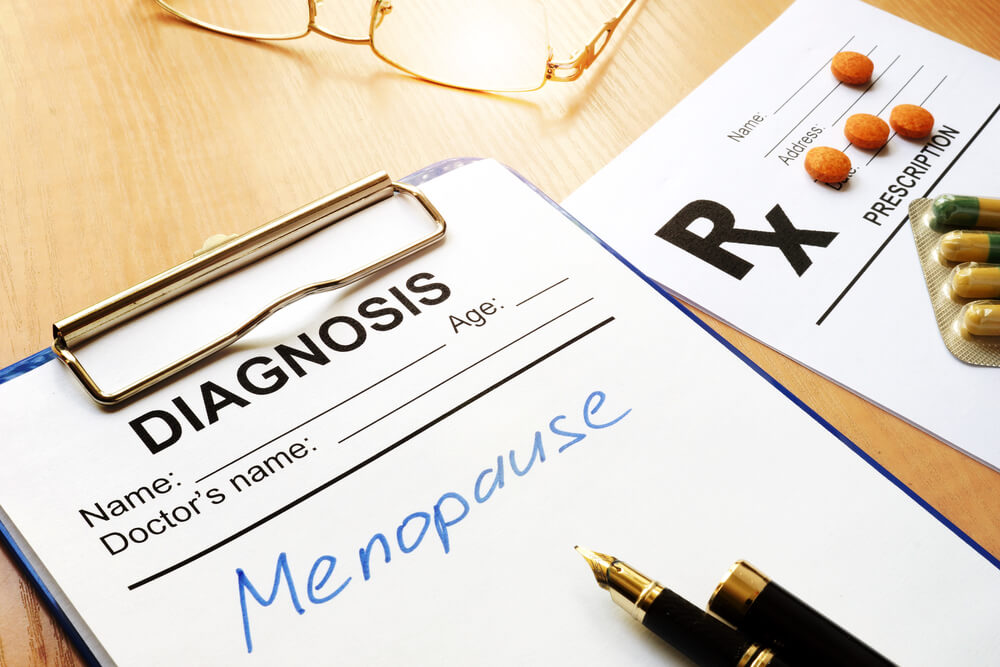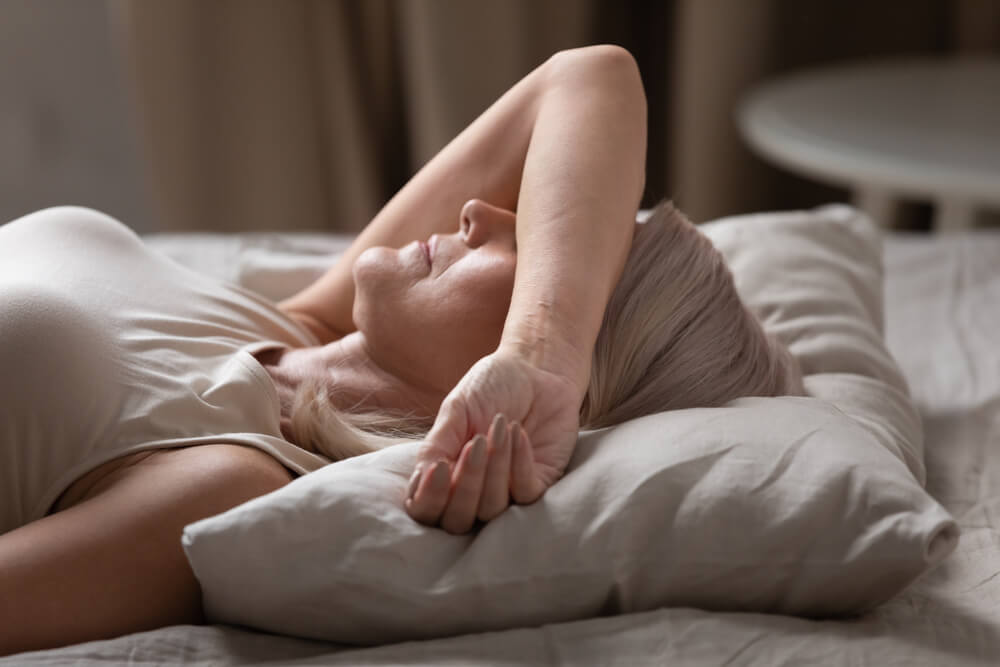There comes a period in every woman’s life where their biological clock reaches the time where menopause begins. When it comes to the sexual fertility of a woman, menstruation is the milestone that marks the physiological readiness to bear children. And at the opposite end of the time spectrum, menopause is the phase of life that signals the end of fertility for women. Menopause is the point in a woman’s life where she stops having her period and naturally occurs between the ages of 45-50 years old. However, there is no rhyme or reason as to which symptoms are experienced or the duration of the menopausal phases from woman to woman. One of the most notable symptoms of menopause and the time period leading up to menopause is hot flashes. Below, we will explain in more detail the phases of menopause, the symptoms and how to deal with them, specifically hot flashes.
Overview of Menopause

This natural process occurs when a woman’s ovaries no longer release an egg (ovulation) and the estrogen and progesterone stop the menstruation cycle. Diagnosed after 12 consecutive months without having a menstrual cycle, women can begin experiencing the transition into menopause in their 40s. Doctors have found that the average age for women to start menopause is 51 years old in the United States. However, menopause can start significantly earlier due to many contributing factors that can lead to early-onset before the age of 40. There are a range of reasons that can cause this to occur:
- Hysterectomy surgery that is required because of uterine cancer or endometriosis
- Trauma and other injuries from incidents like car or sports accidents
- Side effect from some medical treatments like chemotherapy or radiation for cancer
Menopause is actually just one of 3 phases that mark the end of sexual fertility and they include perimenopause, menopause, and postmenopause.
Perimenopause – this beginning phase, also known as menopause transition, marks the transition for women leading up to menopause. Typically, women enter this stage a few years before menopause can be diagnosed. During perimenopause, the ovaries slowly start producing less estrogen and this decrease in estrogen production accelerates during the last 1-2 years of perimenopause. These last few years of perimenopause is when women start to experience the well-known symptoms that include physical, emotional, and hormonal changes due to the lack of sex hormones that their bodies produce. During this phase, women will begin to experience irregular menstrual cycles up until the menstrual cycle stops for a period of 12 continuous months.
Menopause – once the ovaries stop releasing eggs for a year, perimenopause is over. As discussed above, menopause is diagnosed when a woman has 12 months without a menstrual cycle that has not been influenced or caused by any abnormalities, diseases, disorders, or injuries. Low estrogen levels cause most women to experience a multitude of symptoms. On average, menopause lasts around four or five years, but some women may experience menopause for much longer time periods.
Postmenopause – after menopause, when a woman has gone 12 months since her last menstruation, and for the rest of her life, she is in the postmenopause phase. This phase is categorized by the years after menopause, where symptoms will gradually subside. However, there are some health fears associated with loss of estrogen levels as women age, such as bone density loss. With the increase in life expectancy, most women will live one-third of their lives after menopause.
What Women Experience During Menopause
During the time, months, or years, prior to menopause, women can experience a wide variety of symptoms that are brought on by the hormonal changes in their bodies. Aside from the decrease in estrogen and progesterone levels, physical and emotional symptoms are very common and include:
- Irregular periods
- Mood swings
- Atrophic vaginitis
- Weight gain and/or slowed metabolism
- Dry skin and other tissues
- Thinning or loss of hair
- Sleep disturbances
- Hot flashes/night sweats
- Loss of breast fullness
Hot Flashes

While these symptoms are all possible, most women see a combination in type, duration and severity of these. One of the most well-known symptoms associated with menopause (and perimenopause) is the dreaded hot flashes. Distinguished as one of the most common signs of perimenopause/menopause, hot flashes are defined as sudden, unexpected rushes of increased body heat that happen during the day and/or night that is believed to be strongly linked to hormonal imbalances.
Roughly 75% of women will experience hot flashes during their perimenopause and menopause phases with varying severity. Some women will feel rushes of head and flushing, but no sweating and other women will experience severe sweating that is enough to need a change of clothing. When women get hot flashes at night, they are referred to as night sweats. For some unlucky women, night sweats can be much worse than their hot flashes during the day. There are several contributing factors to this difference, so let’s take a chance on answering why are hot flashes worse at night?
- Hormone Level Spikes – throughout the day for a woman experiencing perimenopause or menopause, estrogen levels do not remain constant and these spikes are linked to the cause of hot flashes. During the night, hormone levels can swing even more drastically, which sometimes results in much more severe hot flashes that can leave clothes and bedding soaked.
- Diet – caffeine, spicy foods, and alcohol are just a few of the dietary contributing factors that can create more severe hot flashes at night. These things naturally increase your body temperature, which is why hot flashes that follow the consumption of these foods and drinks can seem much more intense than other hot flashes.
- Room Temperature – hot flashes can also be more intense if your body is already warm (under the covers, for example) from the bed or room. Heavy blankets, bedding that does not breathe well or a warm room can all be contributing factors to making night sweats worse.
For all the symptoms that can be experienced during a woman’s menopause transition, hot flashes are often regarded as the most inconvenient and severe. There are several menopause treatment options for women and perhaps the most popular is hormone replacement therapy (HRT). While most of the symptoms are caused by or linked to the changes or imbalance of hormones, many women choose not to partake in HRT for various reasons.
Dr. Andrew Krinsky of Tamarac, Florida can help you learn how to stop night sweats among the latest treatments for his patients to help them reduce the frequency/severity of the symptoms or eliminate them altogether. Dr Krinsky MD, FACOG also is a NCMP; NAMS Certified Menopuase Practitioner through the North American Menopause Society. Some of the treatments that Dr. Krinsky utilizes include:
- Vaginal estrogen – this treatment can help improve the physical condition of the vagina due to the decreased levels of estrogen being produced during perimenopause and menopause.
- Osteoporosis medications – to help combat the loss of bone density, Dr. Krinsky often utilizes these medications to help strengthen the bones of his patients.
- Low-dose Antidepressants & Anti-seizure medications – these alternatives medications allow women who are unable to take estrogen for various health reasons, the ability to help curb the severity of or eliminate their hot flashes and mood swings.
- Hormone Replacement Therapy (HRT) – this treatment is especially effective at increasing and maintaining adequate levels of estrogen and progesterone in order to help prevent bone loss, hot flashes, and various other symptoms.
If you have been uncomfortable, inconvenienced, or worse by your menopause symptoms, do not go another day living with your symptoms. Call Dr. Krinsky of South Florida today to schedule an appointment if you need a menopause specialist.


